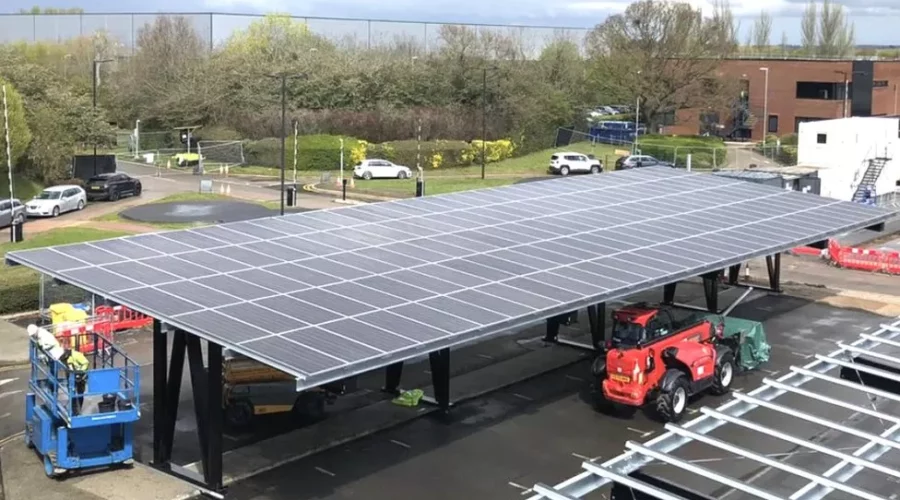Why car parks are the hottest space in solar power
There’s more than just cars and empty spaces in this car park. Huge arrays of angled solar panels sit atop jet black steel supports, soaking up the sun and shading the vehicles beneath.
Outside the offices of a major car manufacturer in the south of England, there are now more than 2,000 panels in total with a peak capacity of just under 1 megawatt (MW).
That’s enough to power hundreds of homes.
“They are looking stunning,” declares Guy Chilvers, business development manager at SIG, the firm that supplied the solar canopies.
These structures make car parks more visually appealing, he insists, while admitting, “I would say that”.
Solar car parks or car ports enable electricity production in open spaces that tend to be positioned conveniently near to energy-guzzling facilities such as hospitals, shopping centres or offices. The canopies have additional benefits in that they protect cars from rain and snow, or hot sun in the summer.
In a drive to boost clean energy production, the French Senate recently approved legislation that makes it mandatory for all existing and new car parks with 80 spaces or more to be covered by solar panels.
While there is no equivalent requirement in the UK, solar car parks have been around for years and there are signs that they are beginning to boom here. With electricity prices currently still elevated, many businesses are turning to on-site renewables to try to keep costs down in the long run.
There is a huge opportunity to turn more British car parks into solar farms, according to a new report published by the countryside charity CPRE and the UCL Energy Institute.
“We think the total potential in the built environment is about 117GW,” says Prof Mark Barrett of UCL. “And of that, 11GW, we think, is car parks.”
For context, the UK currently has around 15GW of solar capacity in total and requires 40GW by 2030 in order to meet net zero targets, according to Solar Energy UK.
Prof Barrett notes that the figure of 11GW is conservative and is based on an estimate of 130 sq km of available car parks in the UK – lower than the 200 sq km estimated by estate agents Knight Frank. The CPRE and UCL report also assumed that 50% of each individual car park would be covered by a canopy rather than 100%.
Whichever way you look at it, there’s plenty of space out there in car parks for solar panels and people are beginning to realise this.
“It’s absolutely gone crazy,” says Mr Chilvers, referring to his inbox. Lately, he’s quoted for hotels, hospitals and leisure centres. Mr Chilvers and his colleagues design and build the steel structures for solar canopies while the panels are supplied separately.
Author: Chris Baraniuk – Technology of Business reporter
https://www.bbc.com/news/business-65626371

